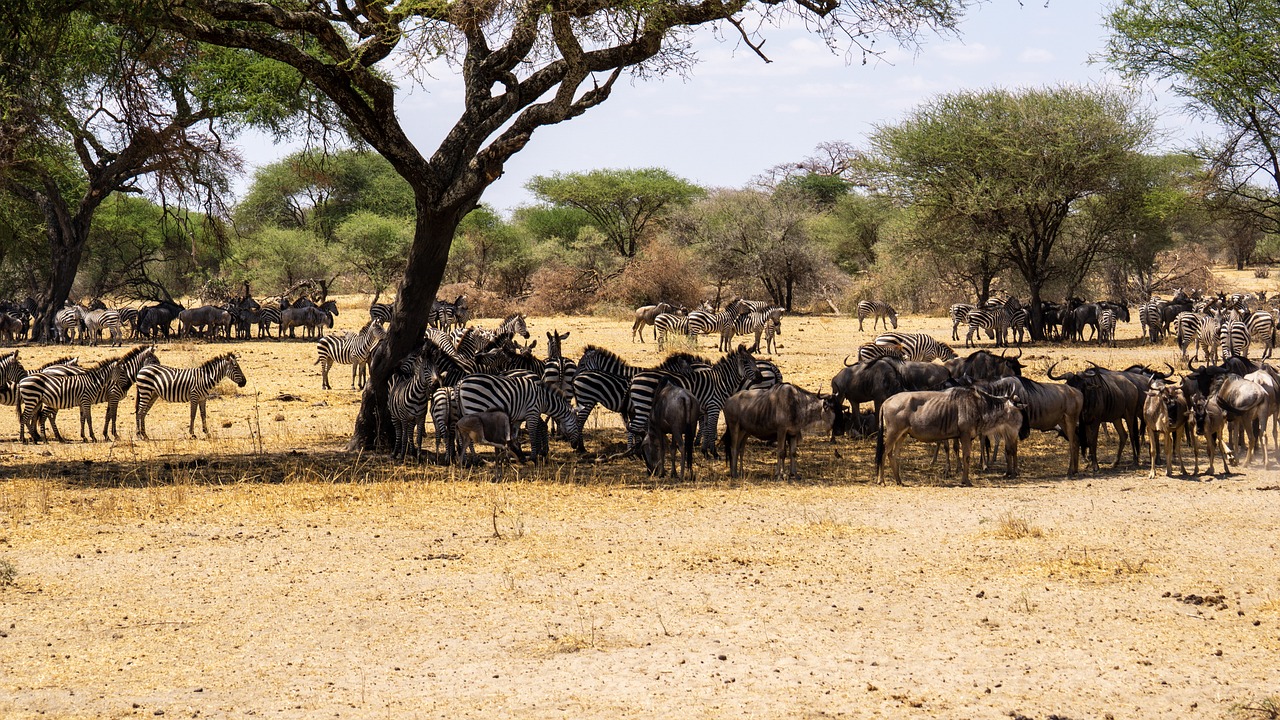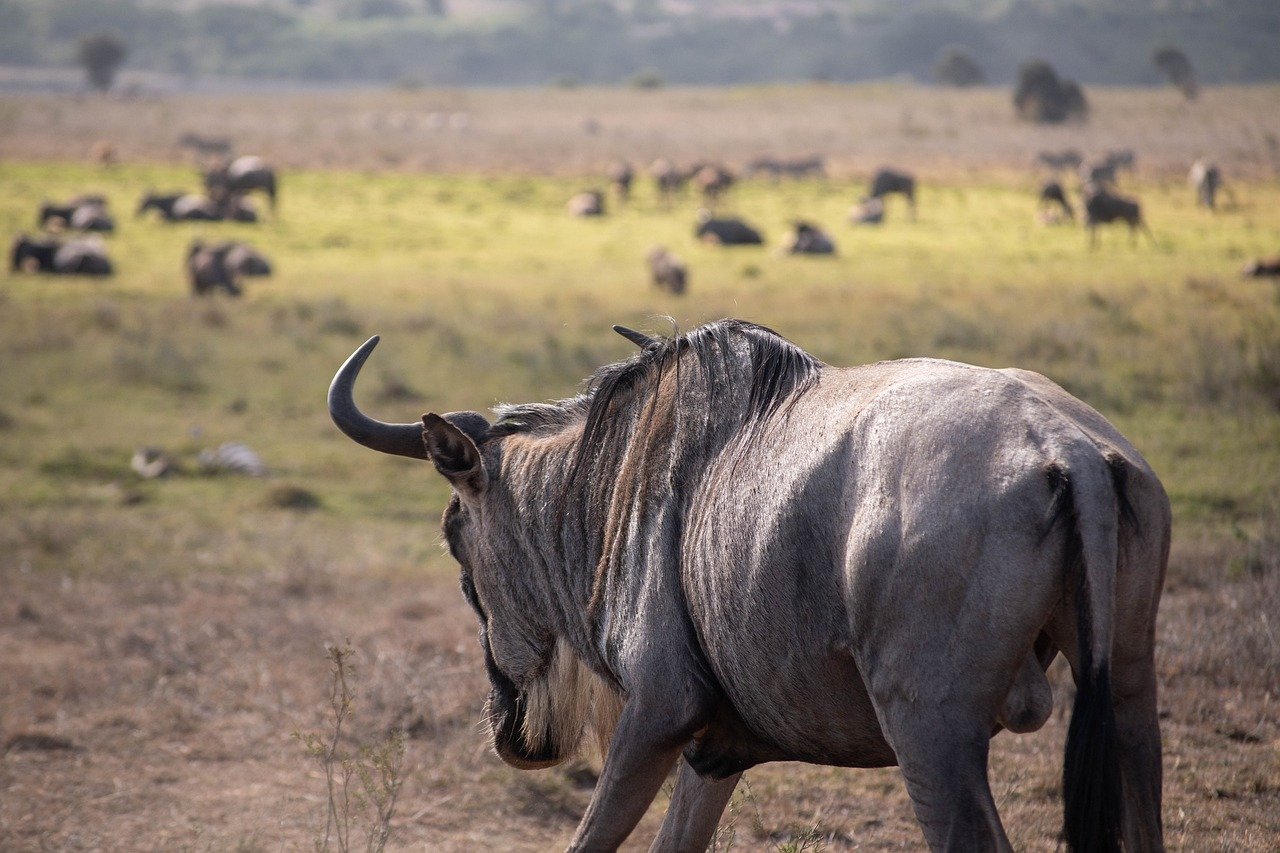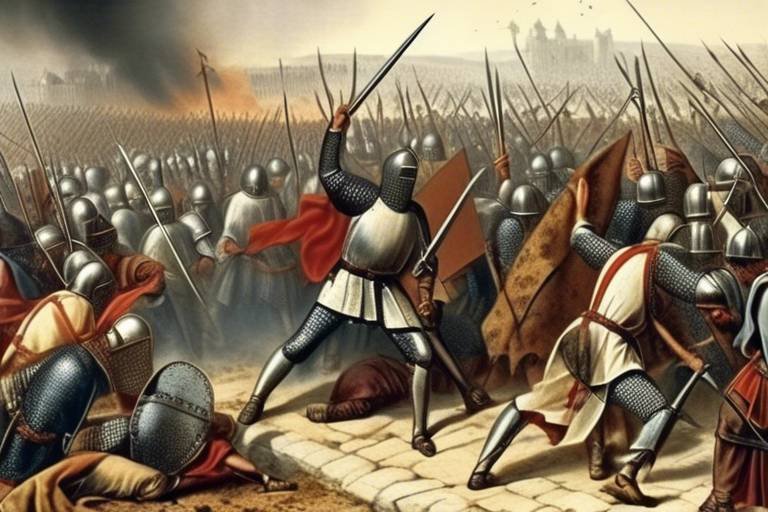The Great Migration - African Americans in the North
The Great Migration was a monumental movement that saw African Americans leaving the Southern United States in droves to seek new opportunities and a better life in the North during the early to mid-20th century. This migration wave had far-reaching effects on the social, cultural, and economic landscapes of both regions.
One of the key driving forces behind the Great Migration were the push factors in the South, including rampant racial segregation, violence, and economic hardships that made life increasingly challenging for African Americans. On the other hand, the North beckoned with promises of job prospects, improved living conditions, and a sense of greater freedom, acting as the pull factors that drew many to its bustling cities.
As African Americans flocked to urban centers like Chicago, Detroit, and New York, these cities experienced a transformation unlike any other. The influx of new residents led to the formation of vibrant black communities, the flourishing of black culture and arts, but also heightened racial tensions as competition for resources and opportunities intensified.
Within the industrial landscape of the North, African Americans found employment in key sectors such as manufacturing, transportation, and services, playing a pivotal role in driving the economic growth of urban areas. This newfound economic participation also elevated their own socioeconomic standing, paving the way for a more prosperous future.
Despite the allure of better prospects, African Americans encountered significant challenges in the North, facing discrimination in housing, education, and the workforce. This systemic bias fueled the creation of segregated neighborhoods and fueled the ongoing struggle for civil rights and equality in the face of adversity.
The Great Migration set off a cultural renaissance among African Americans, sparking a creative explosion in literature, music, art, and activism that reverberated throughout the North. This cultural revival laid the groundwork for movements like the Harlem Renaissance and the Civil Rights Movement, shaping the course of history in profound ways.
Looking back, the legacy of the Great Migration continues to shape the fabric of American society, altering demographic patterns, political dynamics, and race relations in lasting ways. Its effects can still be felt today, underscoring the enduring impact of this transformative period in history.
While the peak of the Great Migration may have passed, the quest for better opportunities and a higher quality of life persists among African Americans, leading to continued migration within the United States. This ongoing pursuit of social and economic advancement reflects a deep-seated desire for progress and prosperity.

Causes of the Great Migration
The Great Migration, one of the most significant population movements in American history, was primarily driven by a combination of push and pull factors. In the Southern United States, African Americans faced harsh conditions of racial segregation, violence, and economic hardships. The oppressive Jim Crow laws enforced strict racial segregation, denying African Americans basic rights and opportunities for advancement. The threat of lynchings and other forms of violence created a climate of fear and insecurity, pushing many to seek refuge elsewhere.
On the other hand, the North offered enticing prospects that attracted African Americans seeking a better life. The promise of job opportunities in industries like manufacturing, transportation, and service sectors lured many to urban centers where labor was in demand. Additionally, the North provided improved living conditions and the hope of greater freedom and equality compared to the oppressive conditions in the South.
As African Americans heard stories of a "Promised Land" in the North, where they could build a brighter future for themselves and their families, the desire for economic stability and social mobility fueled the mass migration. The push factors of discrimination and hardship in the South combined with the pull factors of opportunities and freedom in the North created a powerful force that reshaped the demographic landscape of the United States.

Impact on Urban Centers
When African Americans embarked on the Great Migration to the North, the impact on urban centers was nothing short of transformative. Cities like Chicago, Detroit, and New York experienced a surge in population and diversity, giving rise to vibrant communities that pulsated with the rhythm of a new cultural awakening.
The influx of African Americans brought with them a rich tapestry of traditions, music, and art, infusing these urban centers with a newfound energy and creativity. From the jazz clubs of Harlem to the literary salons of Chicago, black culture flourished, leaving an indelible mark on the fabric of these cities.
However, the migration also stirred racial tensions as African Americans encountered resistance and discrimination in their quest for a better life. Segregated neighborhoods and unequal access to resources became stark realities, highlighting the deep-rooted challenges of systemic racism that persisted even in the North.
Despite these obstacles, the impact of African Americans on urban centers was undeniable. Their contributions to industries such as manufacturing, transportation, and the service sector fueled the economic engine of these cities, propelling them towards a new era of growth and prosperity.
As African Americans carved out their place in the urban landscape, they also catalyzed social movements and activism that sought to address the injustices and inequalities they faced. The seeds of the Civil Rights Movement were sown in these bustling metropolises, setting the stage for a future where equality and justice would be fought for and won.

Economic Transformation
During the Great Migration, African Americans experienced a significant economic transformation as they moved from the Southern United States to the North. This mass relocation not only reshaped the demographic landscape but also had profound effects on the economic development of urban centers.
Upon arriving in the North, African Americans found employment opportunities in various industries such as manufacturing, transportation, and the service sector. This influx of labor contributed to the economic growth of cities like Chicago, Detroit, and New York, where African Americans played a vital role in the workforce.
As African Americans secured jobs in these industries, they began to increase their own socioeconomic status, moving towards financial independence and stability. The economic transformation brought about by the Great Migration not only benefited the individuals who migrated but also had a broader impact on the urban economy.
With the growth of African American communities in northern cities, businesses catering to this population also thrived, creating a network of economic opportunities within these urban centers. The economic vibrancy brought about by the migration of African Americans helped shape the urban landscape and contributed to the overall prosperity of these regions.

Challenges and Discrimination
Challenges and Discrimination during the Great Migration were significant hurdles that African Americans had to overcome in their pursuit of a better life in the North. Despite the promise of job opportunities and improved living conditions, they faced widespread discrimination in various aspects of their daily lives.
One of the major challenges was housing discrimination, as African Americans were often restricted to living in segregated neighborhoods with limited access to quality housing. This led to overcrowding and poor living conditions in many urban areas, exacerbating social inequalities.
Educational opportunities were also limited for African Americans, with segregated schools offering inferior resources and educational outcomes compared to white schools. This lack of access to quality education hindered the socioeconomic advancement of African American communities.
Employment discrimination was another significant issue faced by African Americans in the North. Despite migrating in search of better job prospects, many encountered barriers to employment due to racial prejudice and bias in hiring practices.
Moreover, African Americans were often paid lower wages than their white counterparts for similar work, further perpetuating economic disparities and limiting their financial stability. This wage gap contributed to the cycle of poverty and inequality experienced by many African American families.
Overall, the challenges and discrimination experienced by African Americans during the Great Migration underscored the systemic racism and inequality prevalent in American society at the time. Despite these obstacles, African Americans persevered in their quest for equality and social justice, laying the foundation for the civil rights movements that would follow.

Cultural Renaissance
The ignited by the Great Migration marked a pivotal moment in African American history. As individuals journeyed from the rural South to the bustling cities of the North, they brought with them a rich tapestry of traditions, music, and stories. This influx of diverse experiences and perspectives acted as a catalyst for creativity and innovation, giving rise to a flourishing of literature, music, and art.
Amidst the urban landscape, vibrant communities emerged, providing a fertile ground for artistic expression and cultural exchange. The sounds of jazz reverberated through the streets of Harlem, while the words of Langston Hughes and Zora Neale Hurston echoed in literary circles. Artists like Jacob Lawrence and Romare Bearden captured the essence of the migration through their poignant works, depicting the struggles and triumphs of African Americans in their new northern homes.
The Harlem Renaissance, a cultural movement that encapsulated this era of creativity, brought together intellectuals, musicians, and activists in a celebration of African American heritage. It was a time of reclamation and empowerment, where individuals embraced their identities and shared their stories with the world.
Moreover, the Cultural Renaissance of the Great Migration laid the groundwork for the Civil Rights Movement, as artists and activists used their platforms to advocate for social justice and equality. Through their art and words, they challenged prevailing norms and sparked conversations that would shape the course of American history.

Legacy and Long-Term Effects
The Great Migration left a profound and enduring impact on American society, reshaping the demographic landscape and influencing various aspects of life in both the North and the South. One of the significant legacies of this mass movement was its effect on political power dynamics. As African Americans migrated to the North in large numbers, they began to assert their political influence, leading to shifts in voting patterns and the emergence of black political leaders who advocated for civil rights and social justice.
Furthermore, the Great Migration played a crucial role in urban development, transforming northern cities into vibrant hubs of African American culture and creativity. The influx of migrants fueled the growth of black communities, giving rise to bustling neighborhoods filled with music, art, literature, and activism. This cultural renaissance not only enriched the social fabric of these urban centers but also contributed to the broader American cultural landscape.
In addition to cultural and political changes, the Great Migration had a lasting impact on race relations in the United States. The movement challenged existing notions of racial hierarchy and segregation, paving the way for greater integration and equality. However, despite progress, the legacy of discrimination and systemic racism continues to affect African Americans today, underscoring the ongoing struggle for racial justice and equity.
Moreover, the long-term effects of the Great Migration can be seen in the economic realm. By migrating to the North and securing employment in various industries, African Americans not only improved their own socioeconomic status but also contributed to the economic growth of urban centers. Their labor and entrepreneurial spirit played a crucial role in shaping the economic landscape of the North, laying the foundation for future generations to pursue economic opportunities and upward mobility.
Overall, the legacy of the Great Migration is complex and multifaceted, encompassing political, cultural, social, and economic transformations that continue to resonate in American society. It serves as a testament to the resilience, creativity, and determination of African Americans who sought a better life and made enduring contributions to the fabric of the nation.

Continued Migration Patterns
Even though the Great Migration reached its peak in the mid-20th century, the movement of African Americans within the United States continues to this day. This ongoing migration reflects the persistent pursuit of better opportunities, improved education, and a higher quality of life. While the motivations may have evolved over time, the desire for social and economic advancement remains a driving force behind these continued migration patterns.
Frequently Asked Questions
- What were the main reasons for the Great Migration?
The Great Migration was primarily driven by a combination of push and pull factors. Push factors such as racial segregation, violence, and economic hardships in the Southern United States compelled African Americans to seek better opportunities and living conditions in the North. Pull factors like job prospects, improved living standards, and the promise of greater freedom attracted them to urban centers.
- How did the Great Migration impact urban centers?
The influx of African Americans into northern cities brought about significant changes. It led to the growth of vibrant urban communities, the flourishing of black culture and arts, as well as heightened racial tensions in these areas. The demographic shift and cultural exchange shaped the social fabric of cities like Chicago, Detroit, and New York.
- What challenges did African Americans face during the Great Migration?
Despite the opportunities in the North, African Americans encountered various forms of discrimination in housing, education, and employment. This discrimination resulted in the formation of segregated communities and ongoing struggles for civil rights and equality. The legacy of these challenges continues to impact society today.



















